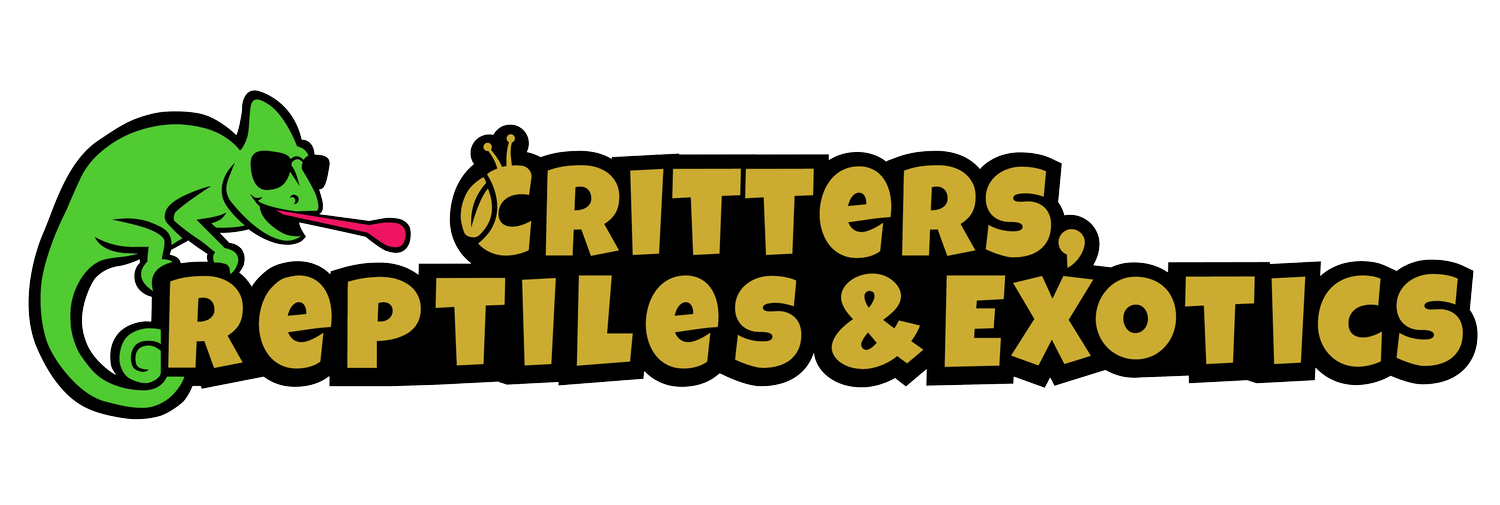Caring for your Mountain Horned Lizard
Mountain Horned Lizard
(Acanthosaura capra)
Basic Information:
Mountain horned lizards are striking arboreal reptiles native to the humid forests of Southeast Asia, including Vietnam, Cambodia, Laos, and surrounding regions. Known for the crown of spines or “horns” on their heads, these lizards spend much of their time perched quietly in trees, relying on camouflage to avoid predators. Adults typically reach 10–12 inches in length, with males often showing more prominent head spines. They are generally calm and prefer observation over frequent handling, making them fascinating display reptiles for experienced keepers.
Lifespan:
Up to 10 years in captivity with proper care.
Sexing:
Males usually display larger head spines (“horns”) and brighter coloration, while females are smaller and less ornamented. Visual sexing can be difficult in juveniles.
Enclosure:
Provide plenty of sturdy climbing branches, cork rounds, and live or artificial plants to mimic their natural forest habitat. Offer shaded perches and elevated basking spots, as they spend much of their time off the ground.
Minimum Size: A vertical enclosure of 24” x 24” x 36” is recommended for a single adult; larger enclosures are preferred for groups.
Substrate:
A deep, moisture-retaining substrate such as coconut fiber, soil mixes, or bioactive setups with live plants works best. This helps maintain humidity and allows for natural digging behaviors.
Lighting & Temperature:
Basking Spot: 85–90°F
Ambient Range: 75–82°F
Nighttime Drop: 70–72°F
UVB: Use a 5.0–7% UVB bulb to provide essential UVB for calcium metabolism and overall health.
Humidity:
Maintain humidity levels of 70–80% with daily misting, automated misters, or foggers. Live plants help stabilize humidity and improve enclosure aesthetics.
Food:
Primarily insectivores, feeding on a wide variety of gut-loaded insects such as crickets, roaches, silkworms, hornworms, and the occasional mealworm or superworm.
Water:
Provide fresh water daily in a shallow dish, though most Mountain Horned Lizards prefer to drink droplets from leaves.
Supplementation:
Calcium with D3: Dust food 2-3 times weekly.
Calcium without D3: Use on alternating days if adequate UVB lighting is provided.
Multivitamins: Offer once weekly to support overall health
Mountain Horned Lizards are an underrated gem in the reptile world — calm, arboreal, and full of prehistoric charm. They thrive in tall enclosures with plenty of climbing space and humidity, making them a fun challenge for intermediate keepers.
Are Mountain Horned Lizards Available for Sale Near Me?
If you're in Clarke County or Winchester, Virginia, you're just a quick drive away from Critters, Reptiles & Exotics in Frederick, Maryland. Check in to see if we have Mountain Horned Lizards available and let us help you build out the perfect vertical setup for these rainforest dwellers. Remember, There’s always a new adventure waiting at Critters, Reptiles & Exotics!

